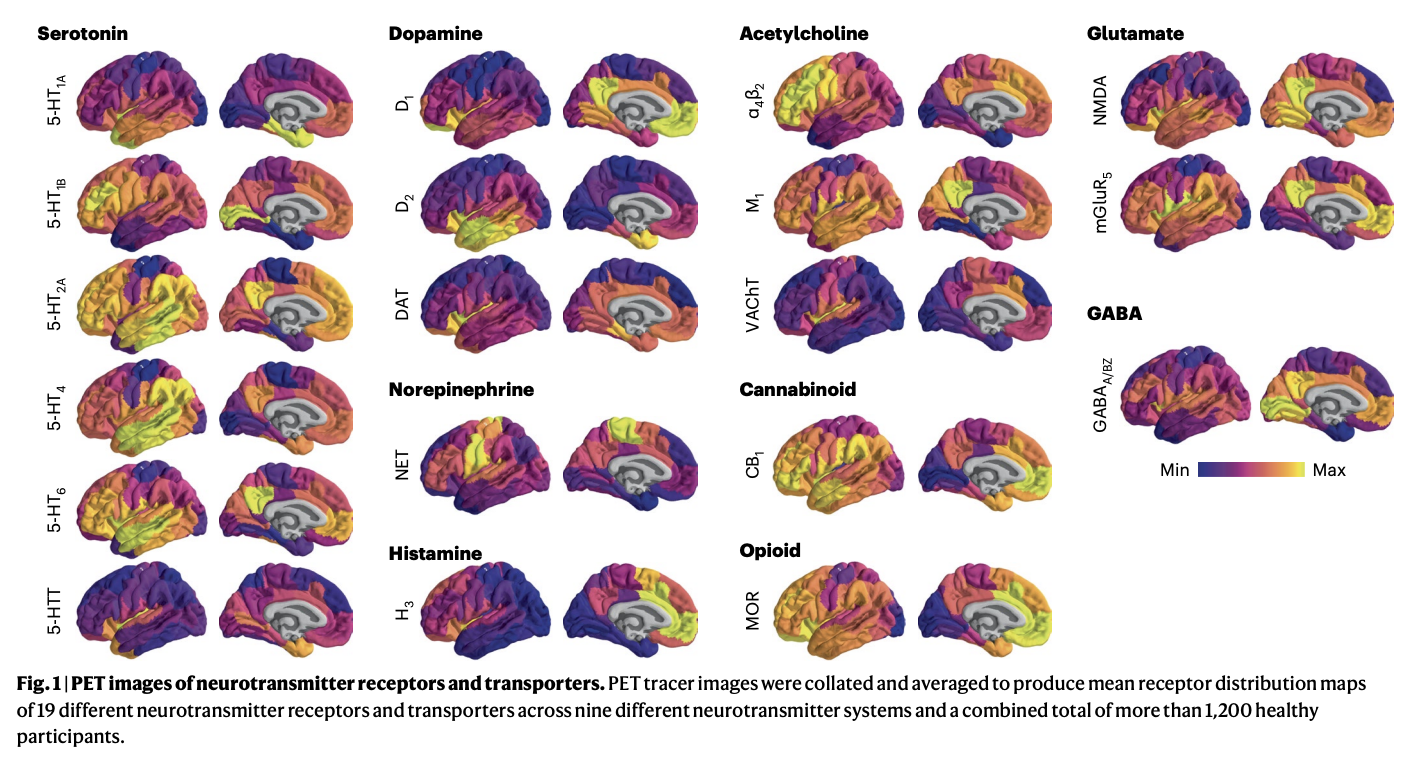Understanding Neurotransmitters
Now that you know how a neuron sends an electrical signal, let’s zoom out to see how billions of neurons work together.
Each neuron communicates using neurotransmitters—tiny chemical messengers that carry signals across the gaps (synapses) between neurons. These chemicals allow your brain to think, move, remember, and feel.
Think of neurotransmitters as different kinds of messages traveling along an enormous web of communication lines. Some messages say “speed up” or “pay attention,” while others say “slow down” or “everything’s fine.” The balance among these signals shapes how your brain and body function moment to moment.
According to this perspective, psychotropic medications can help improve the symptoms associated with these disorders. Psychotropic medications are drugs that treat psychiatric symptoms by restoring neurotransmitter balance.
Psychoactive drugs can act as agonists or antagonists for a given neurotransmitter system.
agonists and antagonists
Drugs can either mimic or block neurotransmitters:
-
Agonists imitate a neurotransmitter by binding to its receptor and strengthening the signal.
-
Antagonists block a receptor and prevent the neurotransmitter from activating it.
These effects can help correct certain imbalances:
-
Parkinson’s disease involves low dopamine levels, so doctors may prescribe dopamine agonists that mimic dopamine and restore movement.
-
LSD acts as a serotonin agonist, producing powerful perceptual effects.
-
Antipsychotic drugs work as dopamine antagonists, reducing excessive dopamine activity linked to schizophrenia.
neurotransmitter activity
| Neurotransmitter | Involved in | Potential Effect on Behavior | Connection |
|---|---|---|---|
| Acetylcholine | Muscle action, memory | Increased arousal, enhanced cognition | Crucial for muscle movement—paralyzed muscles in botulism are due to blocked ACh; nicotine acts as an acetylcholine agonist. |
| Beta-endorphin | Pain, pleasure | Decreased anxiety, decreased tension | Natural painkiller released during exercise (“runner’s high”) or laughter; mimicked by opioid drugs like morphine. |
| Dopamine | Mood, sleep, learning | Increased pleasure, suppressed appetite | Central to reward and motivation; linked to the brain’s “feel-good” pathway activated by food, music, or social praise; low levels associated with Parkinson’s disease. |
| Gamma-aminobutyric acid (GABA) | Brain function, sleep | Decreased anxiety, decreased tension | Major calming neurotransmitter; anti-anxiety medications (benzodiazepines) enhance GABA’s effects to quiet overactive neurons. |
| Glutamate | Memory, learning | Increased learning, enhanced memory | The brain’s main excitatory neurotransmitter; involved in forming memories—excess glutamate can cause cell damage after stroke. |
| Norepinephrine | Heart, intestines, alertness | Increased arousal, suppressed appetite | Heightens alertness and prepares the body for “fight or flight”; levels spike during stress or danger. |
| Serotonin | Mood, sleep | Modulated mood, suppressed appetite | Often called the “feel-good” neurotransmitter; antidepressants (SSRIs) increase serotonin availability to improve mood. |
Psychotropic drugs are not instant solutions for people suffering from psychological disorders. Often, an individual must take a drug for several weeks before seeing improvement, and many psychoactive drugs have significant negative side effects. Furthermore, individuals vary dramatically in how they respond to a drug. To improve chances for success, it is not uncommon for people receiving pharmacotherapy to undergo psychological and/or behavioral therapies as well. Some research suggests that combining drug therapy with other forms of therapy tends to be more effective than any one treatment alone (March et al., 2007).
Mapping the Brain’s Chemical Messengers
For decades, scientists could only guess where different neurotransmitters were most active in the brain. Now, positron emission tomography (PET) imaging techniques have made it possible to map those chemical systems in living humans with increasing detail.[1]

What Do the Labels Mean?
- 5-HT stands for serotonin (5-hydroxytryptamine).
- 5-HT₂A receptors influence perception and consciousness and are activated by psychedelics.
- 5-HTT means serotonin transporter—the target of many SSRI antidepressants.
- D₁, D₂, DAT = dopamine receptors and transporter (linked to motivation and reward).
- GABAₐ/BZ = receptors for GABA, the brain’s major calming neurotransmitter.
- NMDA, mGluR₅ = glutamate receptors (involved in learning and memory).
This brain “chemistry map” helps visually connect the relationship between molecules, brain networks, and behavior. It shows where neurotransmitters act and how they interact, helping researchers:
- Understand why specific drugs (like SSRIs or antipsychotics) affect some regions more than others.
- See how disorders such as depression, addiction, or schizophrenia involve imbalances in multiple systems, not just one chemical.
- Develop more targeted and personalized treatments for mental health conditions.
- Which neurotransmitter systems from the table above appear to have the broadest distribution across the brain in Figure 1?
- Hansen, J. Y., Markello, R. D., Vogel, J. W., Seidlitz, J., Bzdok, D., & Misic, B. (2022). Mapping neurotransmitter systems to the structural and functional organization of the human neocortex. Nature Neuroscience, 25(11), 1569–1581. https://doi.org/10.1038/s41593-022-01186-3 ↵